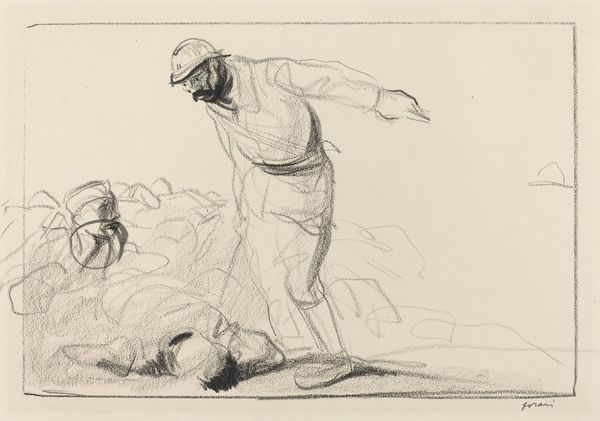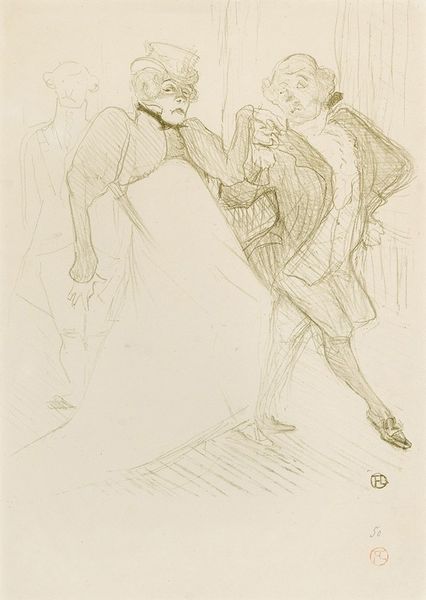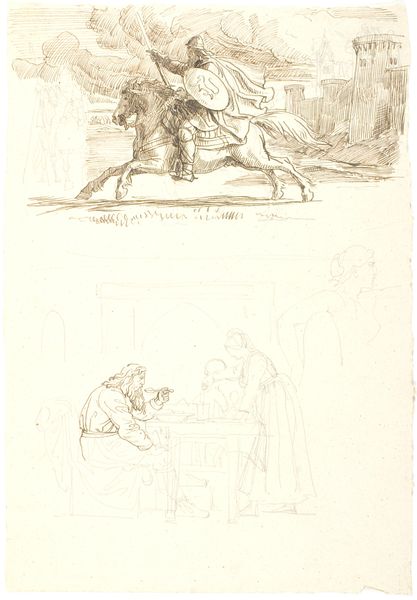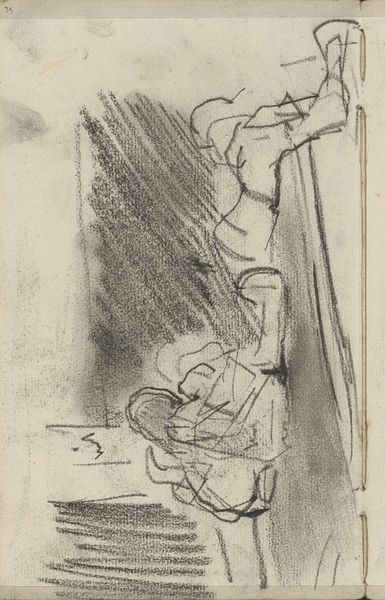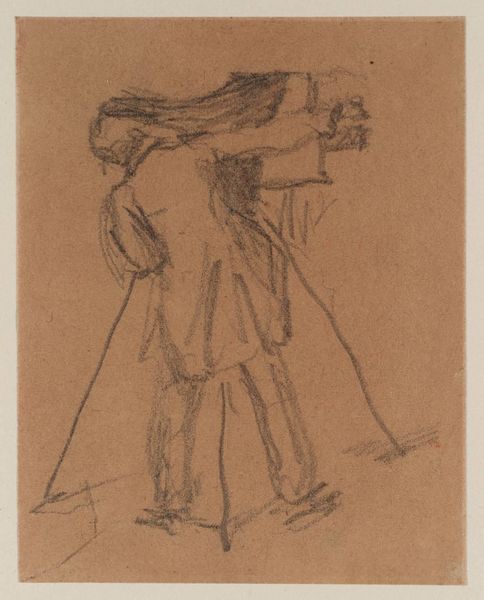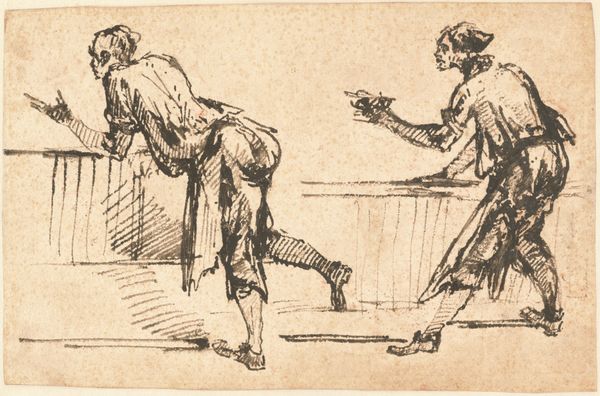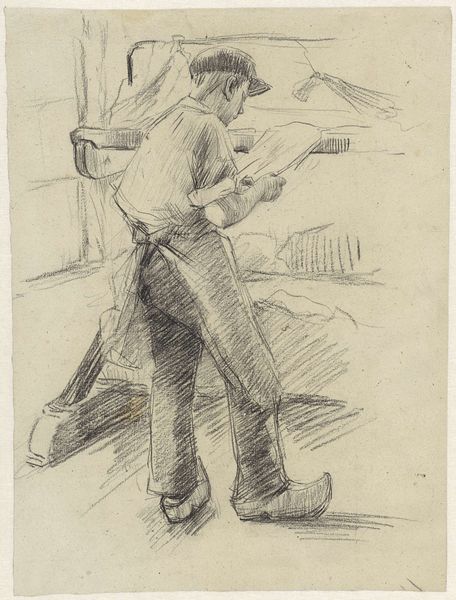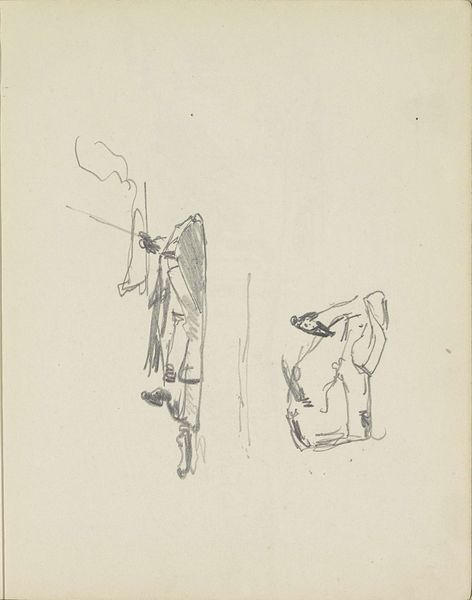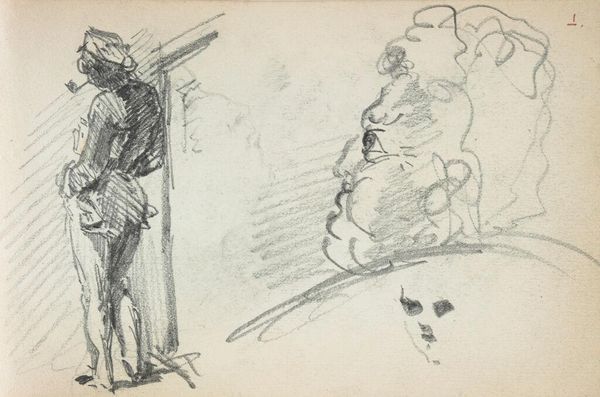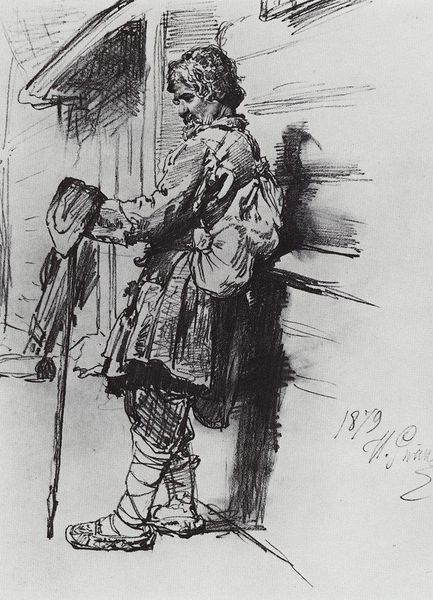
Studiebeeldjes van een jongen met een mand en een meisje 1830 - 1881
0:00
0:00
adolphemouilleron
Rijksmuseum
drawing, pencil
#
portrait
#
drawing
#
amateur sketch
#
imaginative character sketch
#
light pencil work
#
quirky sketch
#
pencil sketch
#
figuration
#
personal sketchbook
#
idea generation sketch
#
sketchwork
#
pencil
#
sketchbook drawing
#
initial sketch
Dimensions: height 163 mm, width 136 mm
Copyright: Rijks Museum: Open Domain
Editor: This is "Studiebeeldjes van een jongen met een mand en een meisje," or "Study Figures of a Boy with a Basket and a Girl," by Adolphe Mouilleron, dating from 1830 to 1881. It's a pencil drawing housed in the Rijksmuseum. I'm immediately struck by its tentative quality and intimate scale – it feels like a private glimpse into the artist's sketchbook. What compositional elements stand out to you? Curator: The superimposition of the two figures is of interest. The formal juxtaposition emphasizes their distinct volumetric presence within the frame. Note how the upper figure, a boy carrying what seems to be a basket, is rendered with a comparatively lighter touch, a skeletal delineation, almost as if the artist is trying to capture movement, fleeting action. By contrast, the lower figure of the girl is executed with greater tonal depth. We are provided a developed interplay of light and shadow around her. How does this contrast of rendering techniques affect your reading? Editor: It makes the girl feel more grounded, present. The boy seems more ephemeral, like a memory perhaps? I notice that although there is a high level of finish on the girl’s face in terms of shading and line, it doesn’t seem proportional to the high degree of detail of other elements such as the blanket texture or basketry on the boy's body. Is this unfinished quality something we should consider when experiencing this work? Curator: Precisely. The intentional variations in completion denote hierarchy; it provides a framework through which we are subtly prompted to investigate the contrast in form and composition, which structures a mode of looking beyond the superficial subject. Note the structural geometry—the lines that direct our focus, which is finally anchored by a deep contrast of dark and light which helps define the form of the figure. What do you think, considering the formal analysis, could this study suggest about the nature of portraiture at that time? Editor: It feels like Mouilleron is not just capturing likenesses but exploring different ways of representing form and movement through line and shading. It prompts questions about the essence of figuration itself. Curator: Agreed. Through the strategic deployment of technique and composition, the work offers a lesson in seeing itself.
Comments
No comments
Be the first to comment and join the conversation on the ultimate creative platform.
